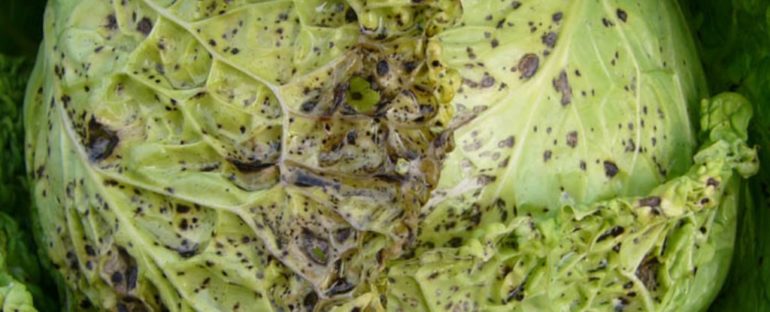In a fascinating discovery, a widespread virus that usually harms plants from the cabbage family, such as broccoli and cauliflower, has been seen actually benefiting its hosts in times of crisis.
During periods of drought, researchers have found the turnip mosaic virus can switch from a hindrance to a help, altering its host’s circadian clock so the plant loses less water.
In the study, when a species of wild weed, known as the thale cress (Arabidopsis thaliana), was infected with a particular variant of the virus, researchers found the plant was 25 percent more likely to survive subsequent water stress.
And it all seems to hinge on the weather.
“Under normal conditions, the virus shows its classic vision as a pathogen by killing watered plants,” explains virologist Santiago Elena Fito, chairman of the Institute for Integrative Systems Biology (I2SysBio).
“However, the infected plants that were subjected to conditions of stress due to drought stayed alive.”
Thale cress. (Marie-Lan Nguyen/Wikimedia Commons/CC-BY 2.5)
To figure out what was actually responsible for these changes, researchers infected healthy plants with variants of the virus that had either evolved under drought-like conditions or had grown up under usual amounts of rainfall.
The infected plants were then either watered normally or subjected to water scarcity.
Those variants of the virus that evolved under normal conditions continued to cause disease in these plants. Whereas those variants that evolved under drought-like conditions showed more mercy, even when their hosts continued to be well watered.
The findings suggest drought-evolved viruses are somehow causing changes in the transcription of their host’s genes to help them better survive. In fact, the authors found plants that were infected with these variants showed genetic changes linked to their circadian clock, which can influence a plant’s water use.
In a rapidly warming world, where more frequent and intense drought threatens the future of many crops, such knowledge could be a lifesaver.
Previous research has shown some viruses can cause disease in cultivated plants but do not appear to impact wild plants in the same way. Scientists think this is because host-virus relationships fall on a spectrum from pathogenesis (or disease) to mutualism (where everybody benefits). And certain environmental conditions can help shape where a virus falls on that line.
In 2008, researchers noticed several mosaic viruses that seemed to improve plant tolerance to environmental stress, boosting their antioxidants and water protection.
In 2013, another study showed drought and heat together could change the turnip mosaic virus’ signalling pathways, although this was thought to reduce the plant’s heat response and not improve it.
The authors claim their study is the first to show environmental conditions can directly influence a virus’ relationship to its host, evolving from pathogenesis to mutualism in a single life cycle.
“It was observed before that a virus can confer drought tolerance to their host,” the authors write, “but, to our knowledge, this is the first time it was explored how abiotic stresses shape the evolution of a host-virus interaction.”
When facing a non-biological threat, the study suggests some plants can adjust their metabolism and gene expression, inducing changes that can, in turn, influence the outcome of a viral infection.
Viruses that evolve in plants under these drought-like conditions have essentially learned not to kick their host while they’re down.
“Our data suggests that virus adaptation under drought conditions results in a differential transcriptome change in their local hosts,” the authors write.
“Comparison of the gene expression in plants infected with standard- and drought-evolved viruses showed that most of the differential expression happens in the drought environment,” they add.
In other words, this type of viral infection can alter the drought tolerance of thale cress plants, promoting host survival and ensuring survival in the virus itself. This is ultimately what allows the infection to replicate and spread even under stressful conditions.
The mechanism used by viruses to induce drought tolerance in plants is probably not universal, the authors say, and likely differs even within species. But if we can figure out how to turn these common infections from pathogens to partners, it could help us prepare our crops for the dry spells ahead.
The study was published in PNAS.



